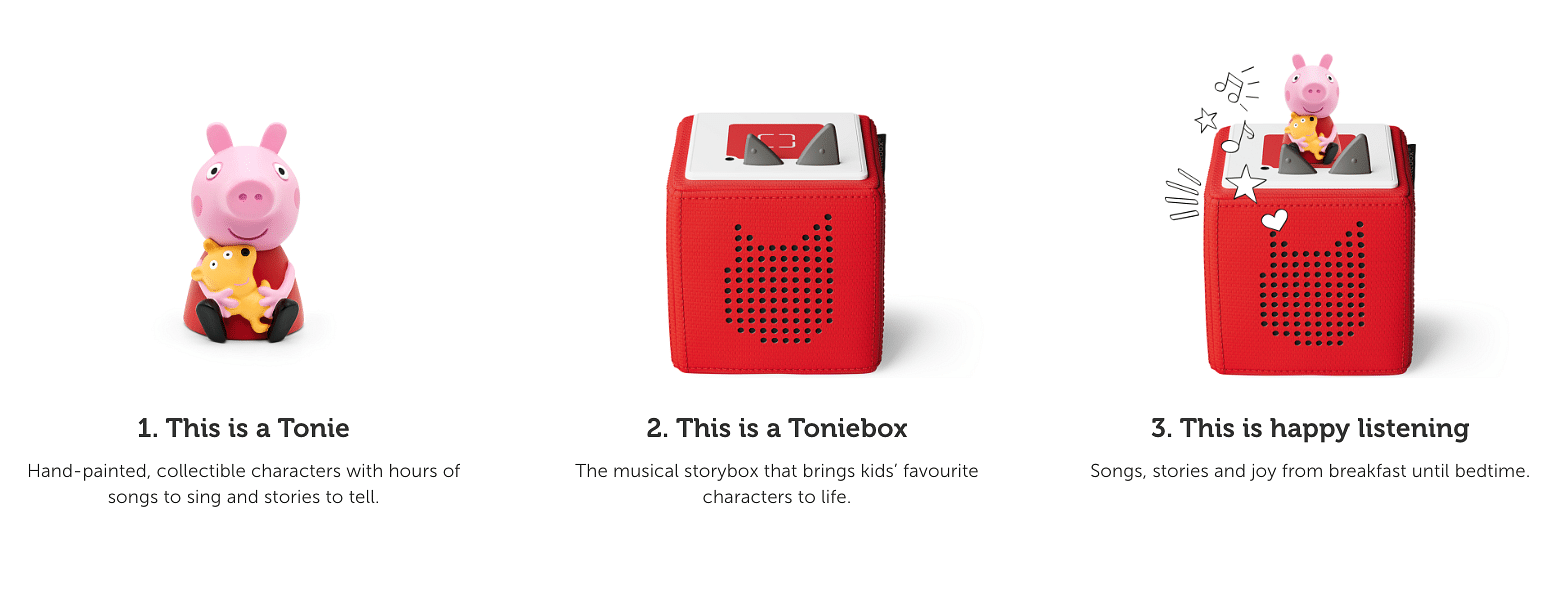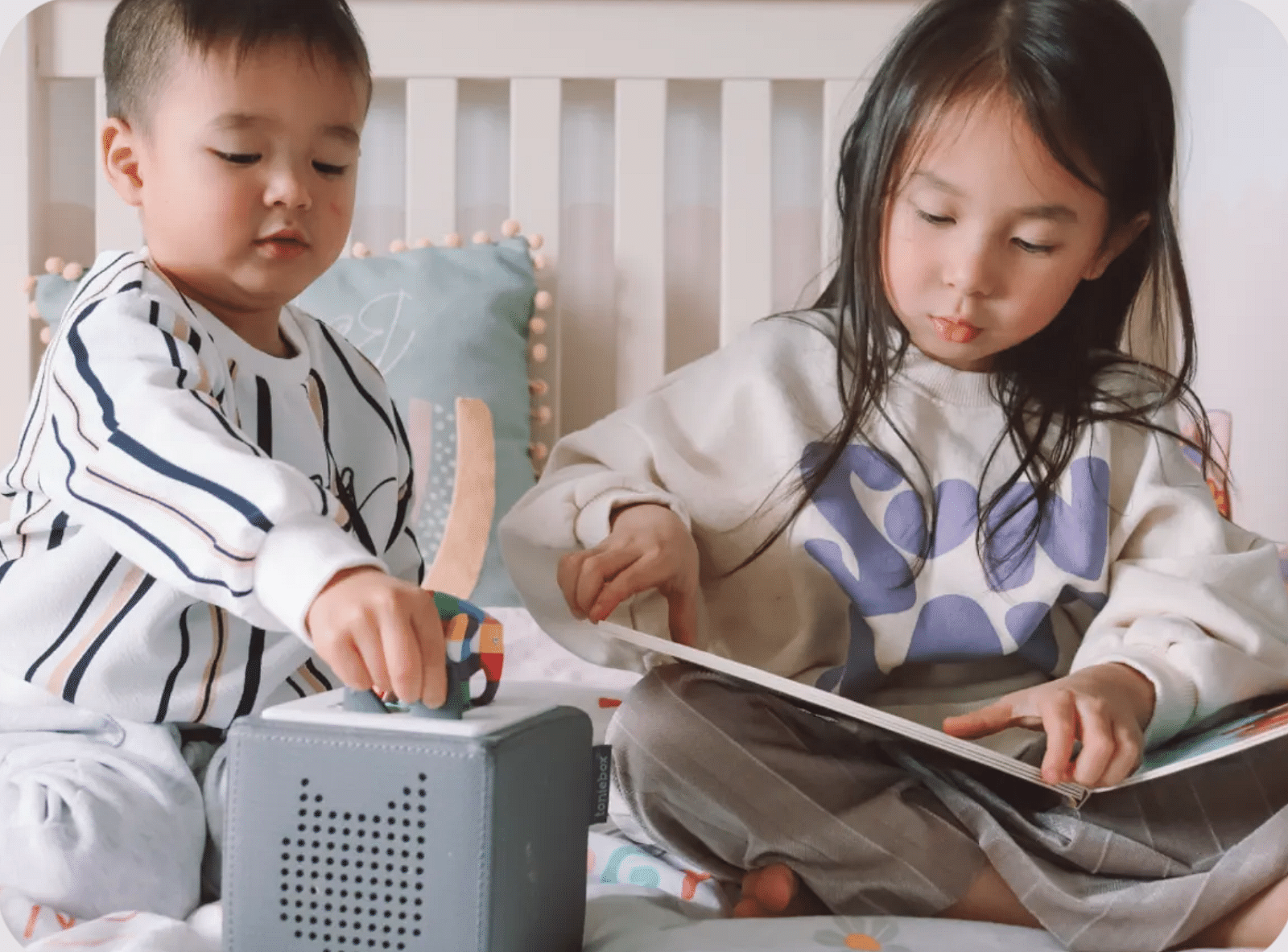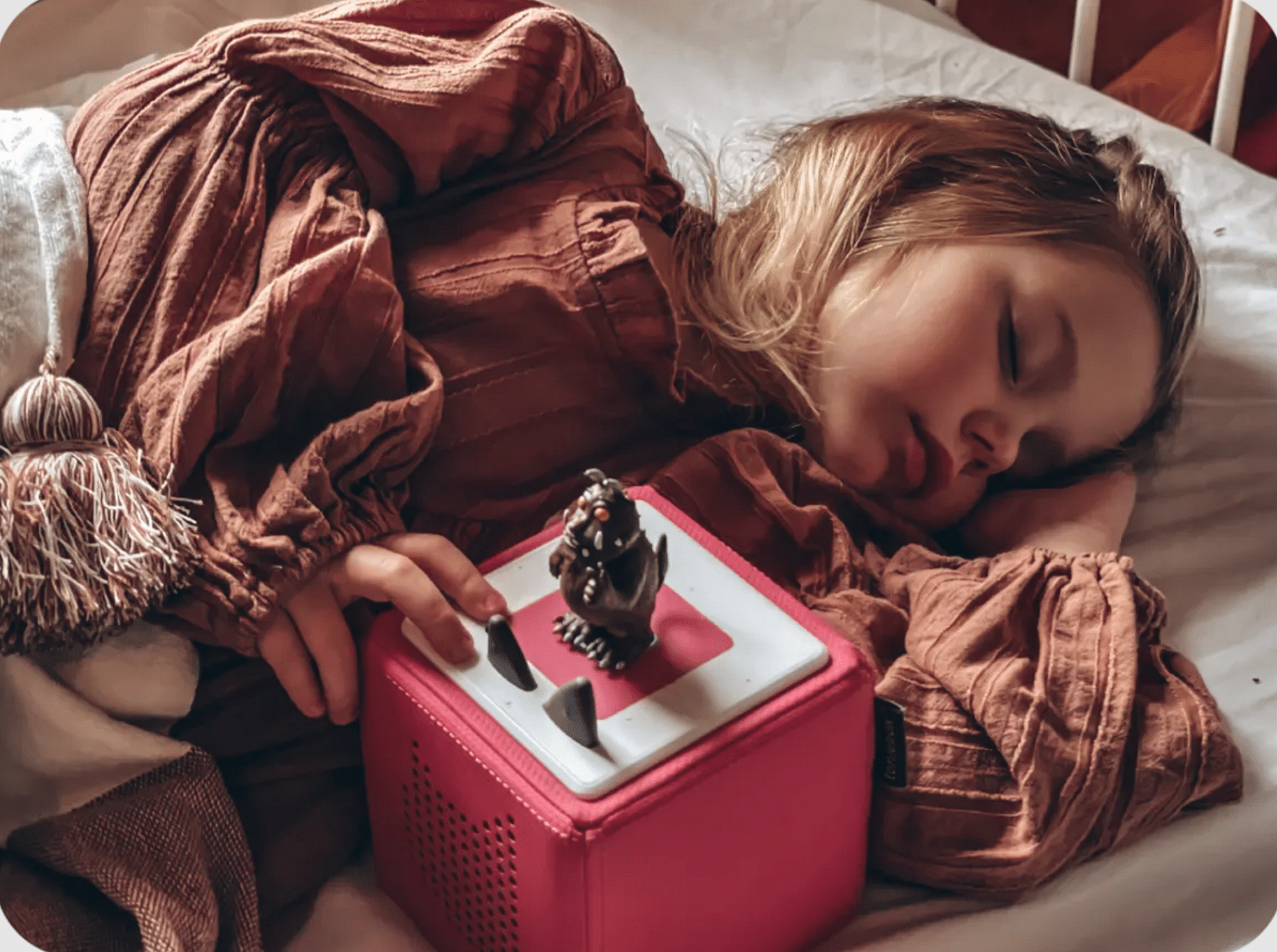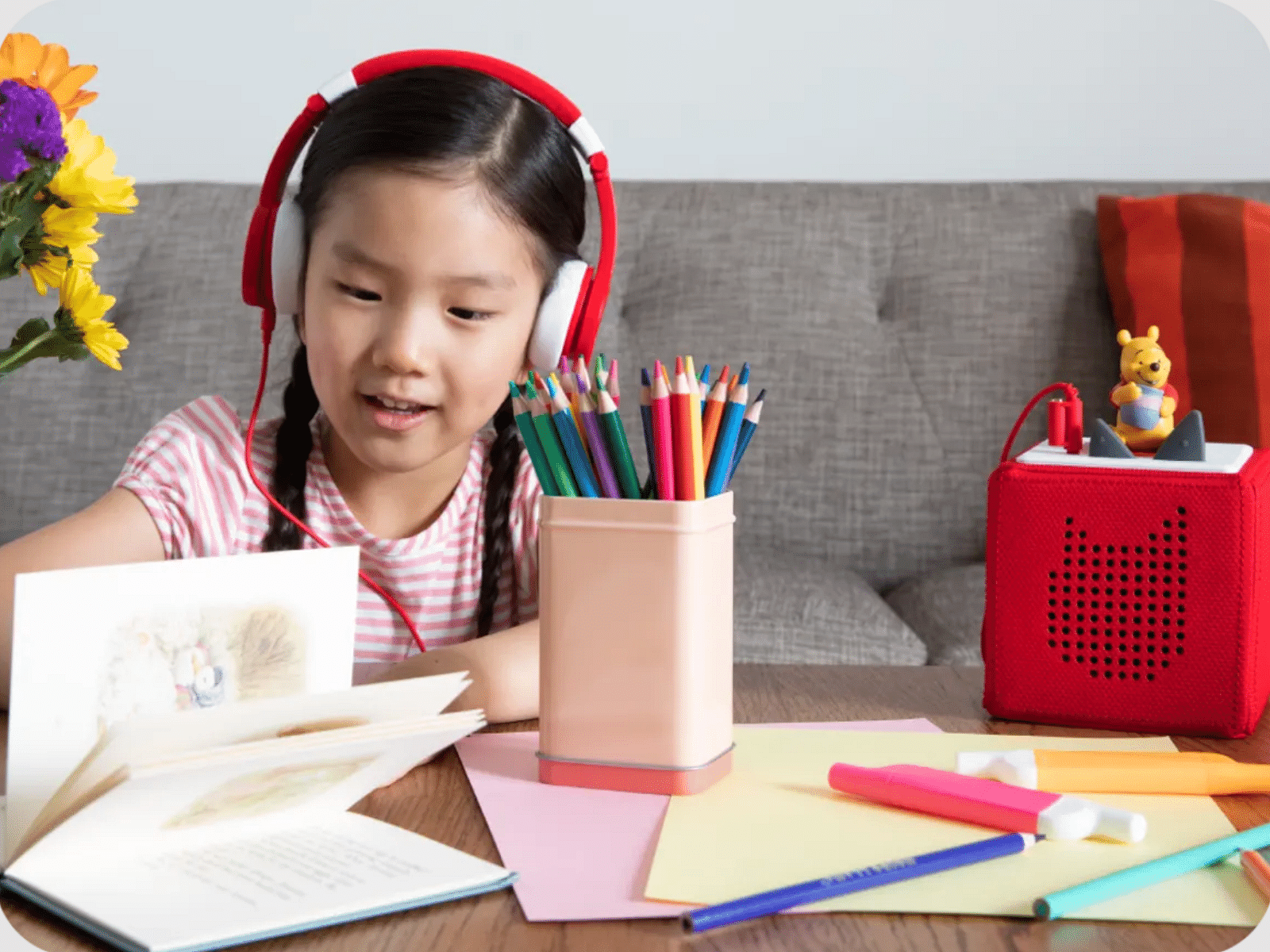
On being unique, standing out, and getting noticed: A look into tonies’ success story in the children’s toy category
By Jim James, Founder EASTWEST PR and Host of The UnNoticed Entrepreneur.
Drew Vernon is the Marketing Director of tonies in the US. The company has only been in America for just a couple of years, and they’ve been getting 40% growth in a very competitive category: toys for young people (aged two to eight years old).
He described the circumstances that the company has been in as a weird time. COVID-19 prompted a shutdown; then, the economy saw hypergrowth for a while. Now, we’re starting to see a lot of softness. And he considers that they’re still building awareness. First and foremost, they’re trying to tell people who they are and what they have to offer through various channels.
tonies is from Germany, and its two founders built it into a €250-million business listed on the stock exchange. In the new episode of The UnNoticed Entrepreneur, Drew talked about their product and how they are taking the business to such stellar growth.

Image from LinkedIn
An Out-of-the-Box Toy for Kids
tonies launched in 2016, and its flagship product is Toniebox. It’s a five-inch speaker system for kids with a layer of foam around it (It’s soft to the touch, and you can squeeze it). It’s a durable figure-based system that uses little figures called tonies that play different songs, stories, and types of content.
The company founders, who are both dads, met on the board of their children’s preschool, and they saw their children's teacher using a CD player to play songs and stories. These players have been around since the ‘80s or ‘90s, and they scratch and break. Most importantly, kids can't use them independently. They need a teacher or a parent to help them.
So the founders created this system where you can simply put a Tonie on the box, and the system will begin to play. Their tonies include characters from Sesame Street. The company has licensed all sorts of content — some come from different partners; some are their own original content.
The independent play device allows a child to listen to songs and stories screen-free, with or without adult supervision.

Screengrab from tonies
One of their figures is Elmo, and he’s one of their Content-Tonies. He comes preloaded. All you have to do is put him on the box, and he'll begin to play. They also have a series called Creative-Tonies, wherein tonies come blank and can be recorded with up to 90 minutes of your own custom content. Kids can write their own songs, poems, and stories and record them. Customers, including grandparents, can also use their app to send special messages or recorded bedtime stories from their phone to the figure from anywhere in the world.
Essentially, any audio content — whether it's your own or your purchased audio content — can be put onto a Creative-Tonie.
The product rescues children from screen time. Because right now, it’s an epidemic: Kids are on screens earlier and for longer periods than ever before.
Marketing a Screen-Free Device
Marketing their product is kind of counterintuitive. tonies has a screen-free device and want to get your kids off of screens. But largely, they have to show you what it is on a screen and demonstrate what it is and what it does visually.
Basically, they’re marketing to parents of young kids who spend their time on devices through entertainment channels. They’re showing what the Toniebox is and the benefits that it can provide for their households.

Screengrab from tonies
tonies has a couple of manufacturing sites. Their products are designed in Germany, but their main warehouse is in China. The figures are hand-painted in Tunisia. They’re fully compliant with all the safety regulations and measures. They have a warning stating that their products are electronic toys; they also have a small parts disclaimer for the products that have small parts. All of this is represented on the packaging.
With regards to getting the product in front of consumers and the media, Drew pointed out that it’s really about showing the uniqueness of the product. And for him, it’s been a challenge but also a blessing.
If you go to Toy Fair, you can walk the venue for three or four hours and see hundreds or thousands of manufacturers selling a lot of the same things. Toniebox, on the other hand, is genuinely unique and is in a new product category.
Their approach is to show not just the breakthrough innovation that the Toniebox provides but the educational ramifications of giving young children — for the first time ever — screen-free, on-demand library access to the world around them.
Drew has commissioned a research study to validate what he knows about the educational aspect of their product. He obtained his initial knowledge about it from talking to thousands of teachers in the last two years as part of their education initiative. He’s been going to conferences and putting their products in classrooms. Now, they’re in over 10,000 classrooms in the US.
Toniebox is proven to be great for centers, circle time, and independent listening. This is what the teachers have been telling him and now he’s setting out to prove it: What is it doing to expose children to vocabulary at younger ages? What is it doing in terms of being the first step towards literacy — whether it be in learning, listening, or reading?
tonies also has products that help kids fall asleep, and Drew is also studying how to quantify those types of benefits.

Screengrab from tonies
Most of Toniebox’s media approach is just getting a Toniebox into the hands of media publishers and editors. And they’ve had some success there in terms of winning awards. They were recognised by Fast Company as one of the most innovative education companies, while Toniebox received a Best Toy Award from Good Housekeeping. The Toy Association also nominated the product as a finalist for Preschool Toy of the Year.
From Germany to the US
tonies’ US office is trying to build a market for the company from scratch in the US. And they are lucky to have the company’s history in Germany behind their back. In the past five years, tonies has gone from 0 to 50% household penetration: One in every two preschool kids in Germany has a Toniebox.
This is the evidence and track record that gives Drew and his team the confidence to go into a market like the US — and to put in the investment required to make that successful.
The other nice thing about the business is that it has what they call a razor and blades model. If they place a Toniebox into the household, they know it’s not the end purchase — it’s the starting point.
This is why the toy category is a hockey stick seasonality. Most companies make a vast amount of their sales in November and December. They’re also experiencing that at tonies: They have hundreds of thousands of families opening up Tonieboxes on Christmas morning and beginning their tonies journey. The difference is that these customers are coming back for the figures.
The investment that tonies makes is in getting Tonieboxes into the hands of kids because they know that it will be just the beginning for that family.
Highlighting the Benefits of Toniebox to Parents
It’s interesting to be a toy marketer of a preschool toy because children don't often or can't really ask for what they want until they're a little bit older. So at tonies, they’re marketing to parents. They’re doing many online video demonstrations through Instagram, Facebook, and TikTok.
But what’s important to keep in mind is that if your customer is a different person from the consumer, you need to give a consumer benefit to the customer as well.
In the case of tonies, if they’re targetting a mom, they will say that the device is not only great for her child but it’s also good for her because it’s going to make managing her child a little less stressful. They will point out that there’s a consumer benefit for the mom, which is peace of mind and an easier parenting experience.
On the Quest Against Screen Time, Distributing to Retailers
As stated, screen time is an epidemic right now, and we're starting to see the detriment happening to our kids in the form of attention deficit, inability to focus, and social anxiety. Drew learned this based on hundreds of conversations with parents and teachers.
Screens will continue to run rampant, but he’s boldly predicting that there will be an increasing backlash and a counter-movement to restore a sense of mindfulness and being present — which is hard to do when you're staring at something virtual or if something else is happening digitally.

Screengrab from tonies
tonies launched in 2020 in the middle of the COVID-prompted shutdown. That forced them to build a primarily online direct-to-consumer model. They also got Amazon up pretty quickly since that is a direct-to-consumer fulfilment.
As the world softened and people started shopping in retail again, Tonies started to increase their efforts. Now, they’re in about 700 independent specialty retailers. They’ve also recently begun distribution in Target and have been doing well. They’re also on their way to other major, big-box retailers.
Drew recalled reading about some campaign done in the 1920s called “A Chicken for Every Pot,” which showed the universality of that particular product. Applying that to Toniebox, he sees that campaign as “A Toniebox in Every Home.” It captures the product as a universally applicable device for a preschool or a young child. And there isn’t really any reason why there shouldn't be a Toniebox in every home.
On Solving a Need
Drew is a marketing director, and he’s worked with Lego and Proctor & Gamble. He’s had his own business. Now, he’s driving the marketing and sales for tonies in America.
Apart from having a unique product, what helps move the needle for a brand is to solve a need. It’s business 101, but many businesses and products don't really solve a need.
When he was in beauty marketing, he was selling lotion. He launched a product called Jergen's Wet Skin Moisturizer, which was designed to go on your skin while your skin is still straight-out-of-the-shower wet. Their lotion can be absorbed twice as fast. If your lotion takes 10 seconds to absorb, this brand-new lotion is going to absorb in five seconds.
However, it wasn’t the kind of space where he wanted to spend his career, so he left that niche. He needed something like the Toniebox that has the opportunity to change a child's life. And a need like that is what you need to make your product succeed. You must find what that thing is for your current business — the significant need it solves — or find a new business.
This article is based on a transcript from my podcast The UnNoticed Entrepreneur, you can listen here.

